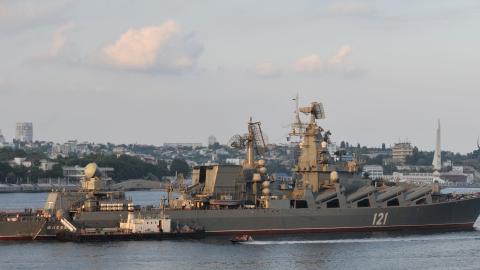Most proposals for military aid to Ukraine involve help from the air, such as establishing a Berlin-style airlift, flying in warplanes from Poland, and creating a no-fly zone over Ukrainian territory. But it would be a serious blunder to neglect the naval aspect of the conflict. Russia certainly hasn’t. According to the Times of London, recent intelligence indicates that Russia has a fleet of warships ready to launch an amphibious assault on Odessa, the last major Ukrainian seaport not in Russian hands or under Russian siege.
It is vital to Europe’s peace and security that Ukraine not lose what remains of its Black Sea coastline, and that Russia not consider that international body of water its private naval and maritime preserve. The U.S. and the North Atlantic Treaty Organization can protect this strategic flank of Europe and NATO while also relieving Russian pressure on Ukraine short of risking war.
The Black Sea’s importance to Russia’s economy and sovereignty dates from the 19th century. But then the Black Sea and the Turkish Straits, which allowed access to the Mediterranean and beyond, took on growing importance for Russia.
That was thanks to Russia’s export trade in grain and industrial goods—and its imperial designs in Southern Europe, including on the Turkish capital. The issue became so important that nations negotiated international agreements aiming to restrict the Russian navy’s presence in the Black Sea and access to the Turkish Straits, the most recent being the Montreux Convention, which was signed in 1936 by the Soviet Union and nine other countries and is still in effect.
Read the full article in the Wall Street Journal

















